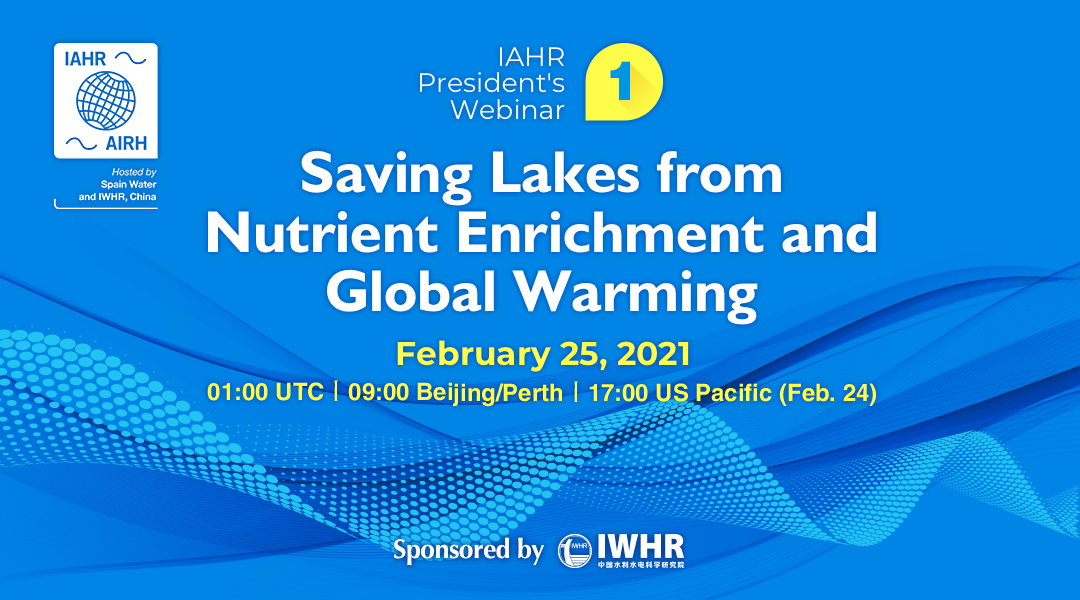IAHR President's Webinar 1: Saving Lakes from Nutrient Enrichment and Global Warming
« Back to list of video collections

IAHR President's Webinar is a serial of events that aims at inspiring, disseminating and catalysing knowledge and thinking on the most important water engineering and related environmental issues of present times through high-quality and tasteful online events.
The first of this series of webinars, live-streamed on February 25, 2021, was centered on the topic of lake environmental hydrodynamics, featuring Prof. Jorg Imberger, University College London, UK and University of Miami, USA as the keynote lecturere, as well as two invited speakers: Prof. Yong Liu from Peking University, China and Prof. Steve Monismith from Stanford University, USA, and was co-chaired by IAHR President Prof. Joseph Lee and former IAHR Vice President Prof. Angelos Findikakis.
Prof. Jorg Imberger, after a review of the important physical processes and the non-dimensional numbers that govern each of hydrodynamic processes in a lake, explained how the increasing stability of deep lakes is resulting in a delay in lake turnover and an ever-increasing volume of the zero oxygen hypolimnion that is killing the endemic biodiversity in deep lakes, as well as how the new adaptive, real-time, self-learning management approach may be used to avoid this disaster from happening.
Prof. Yong Liu focused more on a case study, talking on the pollution of the Lake Dianchi, and the mitigation actions launched to restore one of the three most polluted large shallow lakes in China. Models were also explained to analyze the temporal variations of 30-year water quality change and explore the joint effect of external nutrient input and internal cycling.
Prof. Steve Monismith presented field observations of these flows drawn from a coral reef in American Samoa, a seagrass bed in Palau, and a kelp forest in Baja. In the first case, drag can be related explicitly to the reef geometry at cm scales. In the second case, drag varies strongly with velocity reflecting the re-configuration of the drag elements due to bending, behavior that can be modeled with some accuracy. In the final case, he showed velocity measurements taken over the span of several years during which time the condition of the kelp forest varied between non-existent and dense.
This webinar was sponsored by China Institute of Water Resources and Hydropower Research (IWHR), China's top national research institute on water resources and hydropower under the direct administration of China's Ministry of Water Resources.
For more details, please visit the INTRODUCTION page of this webinar. The playback video can also be watched on the same link as the LIVE page.
For more IAHR online events, visit IAHR Webinars.
-
Joseph Hun-Wei Lee - Introduction
2021-02-26 -
Jörg Imberger - A Design Strategy for Saving Lakes from the Impact of Nutrient Enrichment & Global Warming
2021-02-26 -
Yong Liu - Water Quality Restoration from Increasing Nutrient Enrichment: A Review of 30 Years' Efforts for Hyper-Eutrophic Lake in China
2021-02-26 -
Stephen Monismith - Flow through Living Roughness
2021-02-26 -
Discussion and Q&A
2021-02-26
